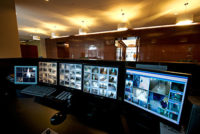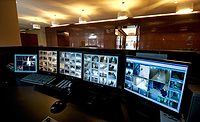6 Reasons Why Content is King in Command Centers

Building or upgrading a command center usually starts with facilities and equipment – ergonomic desks and chairs, LED displays and computers – as opposed to the content that supports the mission of command center staff.
This approach does a disservice to your command center team by not prioritizing content that supports efficient risk management for your organization. If the content in your command center does not support its mission, the funds that go to hardware and equipment in the command center are going to waste.
No matter the size of your organization or command center, it is critical that content is king in your command center. Here are the top 6 reasons why:
-
What you don’t know can hurt you.
Operational risks – the type of risk caused by breakdowns in internal procedures, people and systems, or from external events – impact virtually all organizations from global corporations to SMBs. The larger the organization and the more geographically dispersed it is, the more exposure it has. Command centers provide a centralized physical space for managing operational risk, but without relevant information about risk events that could threaten your organization, the command center is operating at a severe disadvantage. The command center needs to be fed with content not just about the organization, but the world in which it operates.
-
Not all content is good content.
While the command center needs content, it needs to be the right content. Information about risks that are not relevant to the organization create a distraction. Today’s command center needs to be equipped to filter through the content so that only relevant threats are revealed.
-
Too much content can hurt you too.
There is a limit to how much content on individual or a command center can process at any given time. Content needs to be packaged and delivered specifically for the “job to be done” by that particular role or situation – without wasting valuable time manually combing through irrelevant news. For example, if a winter storm is threatening a city in the northeastern U.S., many stakeholders in an organization impacted need to be alerted, but each of those stakeholders is interested in a different aspect or impact of that storm.
-
If content is king, then visualization is the queen.
Content presents a Big Data challenge, as the more of it you have, the harder it is to manage and utilize. Risk data needs to visualized in order to gain context. Without intuitive and relevant ways to see the risks and threats your enterprise currently faces, it is much harder to assess and take action to mitigate them. In its most effective form, visualization provides at-a-glance understanding of the current situation and the people, facilities, supply routes and other assets that are impacted.
-
Content must be tailored to its display.
How many times have you seen a command center that has wall monitors displaying desktop applications using small fonts? These systems were not intended for large screen displays, yet we take up valuable real estate on our large screens to display information that is not suitable for that medium. Large screens need to be filled with content that is suitable for large screens, and desktop applications need to handle the more detailed information.
Suitable content for a large screen command center must provide an overview of what’s going on across the enterprise and enough detail to prompt the operator to investigate more on his or her desktop.
-
Content alone is not enough.
Finally, while content may be king for your command center, that’s just the start. If you want to take your command center to the next level, it must function as the nucleus of risk management for the enterprise and be connected to all functions it supports. This means integration into operational systems like asset management and travel, as well as sensor and signal systems like access control and video management. It must connect with executional systems like Enterprise Resource Planning and supply chain systems, and it must be able to collaborate with communication systems like mass notification and email. The next generation command center is not simply a showcase of wall monitors and technology, but rather the epicenter of managing operational risk. Your command center should be the most valuable asset your company has to help preserve reputation, protect employees and ensure business continuity.
Looking for a reprint of this article?
From high-res PDFs to custom plaques, order your copy today!






